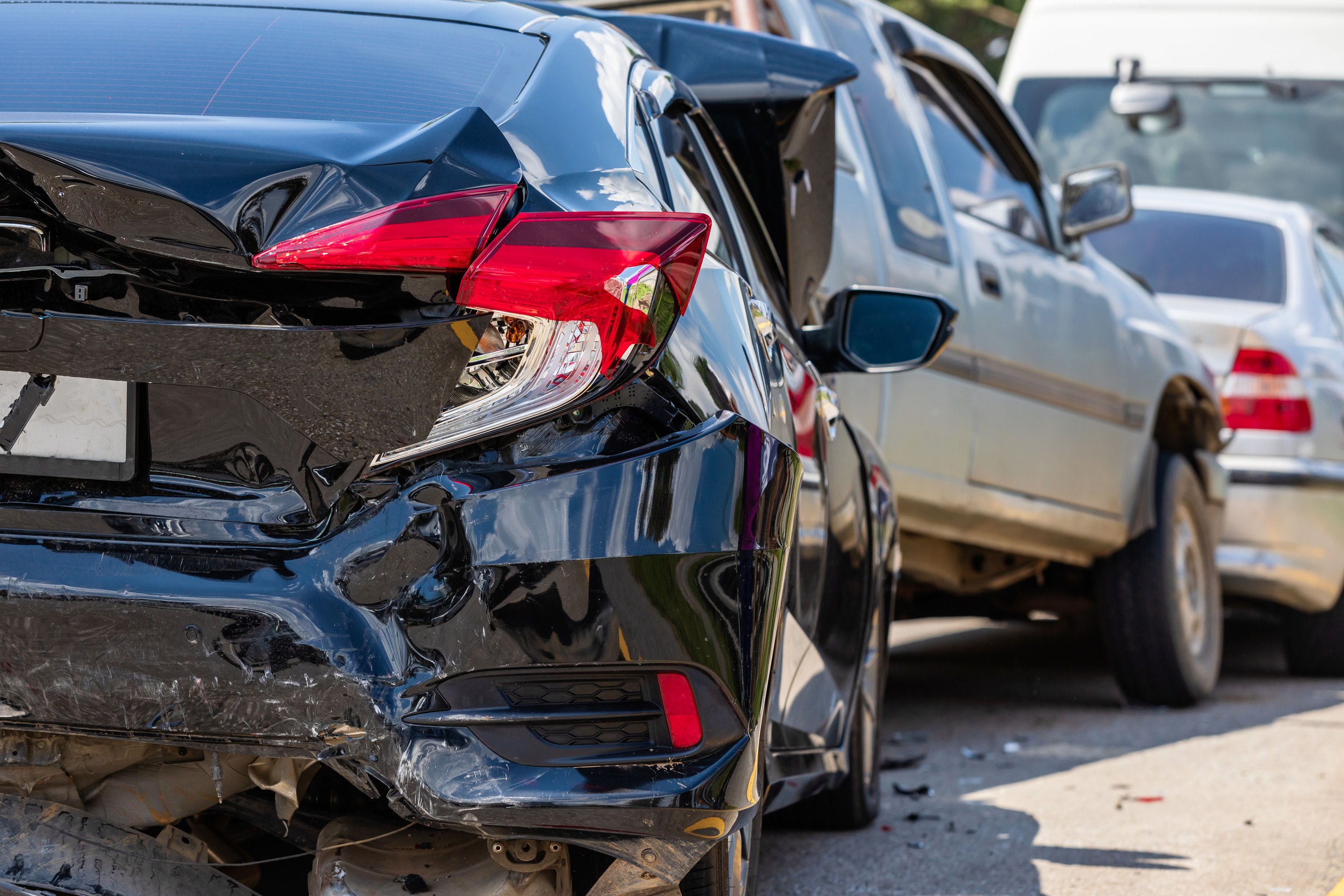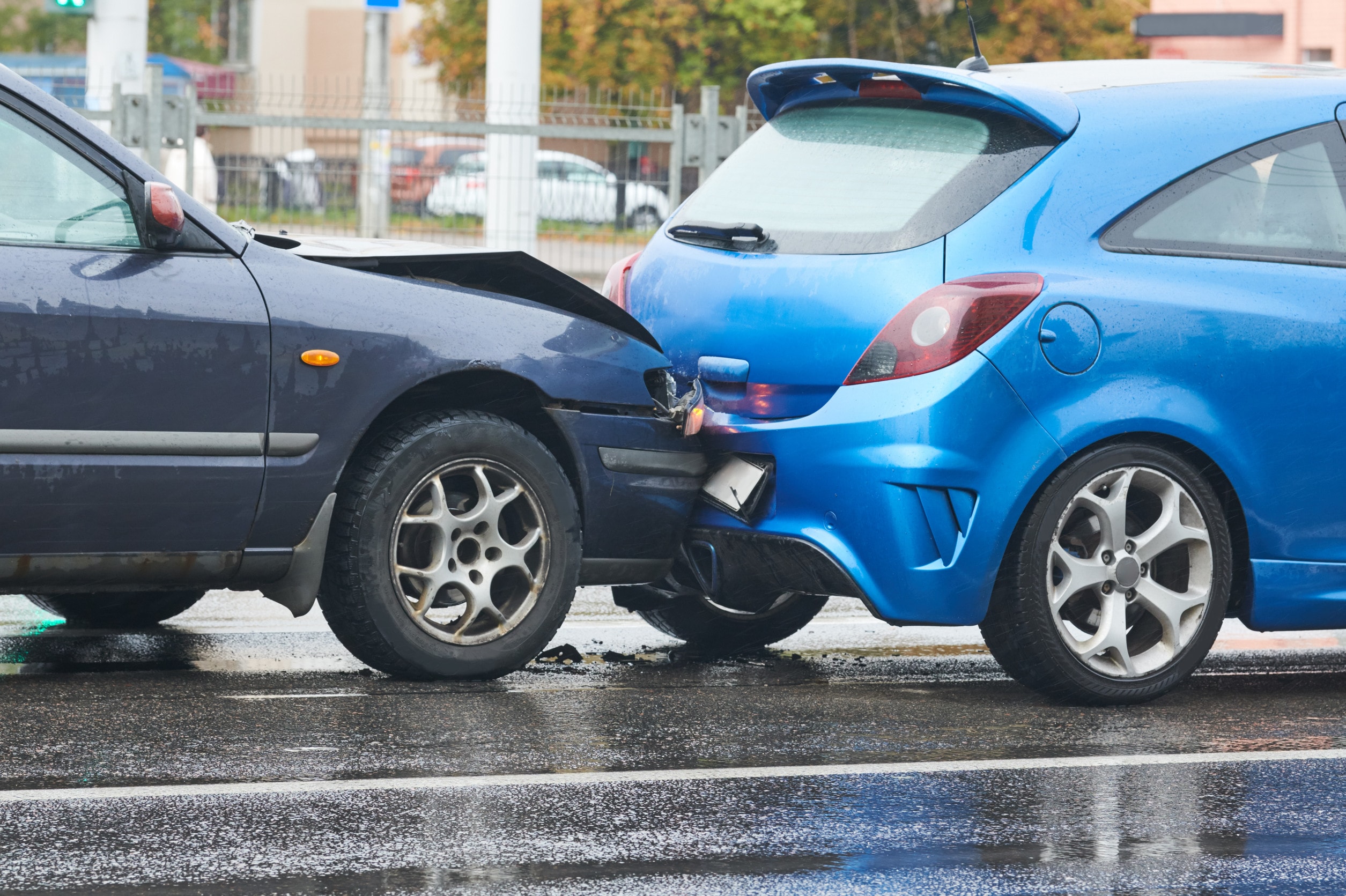Have you been involved in a car accident where another vehicle hit you from behind? Are you wondering, “How much compensation could I get for a rear-end collision?” According to statistics published by the government, there were an estimated 337 billion vehicle miles travelled over 2023/24, showing that motor traffic is on the rise in Great Britain. But what do you do when your journey goes wrong?
In this guide, we’ll explain everything that you need to know about making a road traffic accident claim for a rear-end collision. We’ll start by exploring road traffic accident compensation, including what your payout could cover, and then discuss how payouts are determined.
Then, we’ll talk about what makes you eligible for compensation and how a rear-end collision could affect you. Finally, our guide will touch on how we can help you and why we recommend working with a solicitor before you start proceedings.
Contact Us
Whether you have questions about the claims process or you’re just ready to get started, we are here to help. Contact us today to learn more by:
- Calling us on 0800 408 7826
- Using the live chat feature
- Contacting us online
Jump To A Section
- How Much Compensation For A Rear-End Collision?
- How Will The Whiplash Claim Reforms Affect My Claim?
- I Was Involved In A Rear-End Collision, Am I Able To Claim?
- Examples Of Rear End Collisions
- Making A Rear-End Collision Injury Claim
- Speak To Our Advisors
- Learn More
How Much Compensation For A Rear-End Collision?
So, how much compensation for a rear-end collision could you get? The amount you could get from a successful claim depends on a number of factors, which we’ll discuss in more detail shortly. But first, let’s talk about what your compensation payout could contain.
Generally, road traffic accident compensation can be made up of two heads. The first head is called general damages, and this covers the pain and suffering you’ve endured as a result of your injuries.
What Determines My Rear-End Collision Compensation Amount?
There are a number of factors that can determine how much compensation for a rear-end collision you could receive, including:
- How severely you were injured, including both physical and mental injuries
- How long it will take you to recover
- The ways in which your injuries have affected your daily life
- Whether or not you can still work, or if you’ve had to take time off work temporarily to recover
- Whether or not your injuries caused you to suffer financially
- Any future projected financial losses, like the cost of relocating to a wheelchair-friendly flat
These are only a few of the factors that will go into calculating your compensation payout. It’s important to note that every road traffic accident claim is unique, and those responsible for calculating your payout will base what you receive on your individual case.
Below, we’ve included a table made up of figures from the Judicial College Guidelines (JCG). The JCG is a document used by solicitors and other professionals to help them calculate compensation by offering guideline brackets for various injuries.
Please note that these figures are only guidelines, and the first entry is not a JCG figure.
| Injury | Compensation | Notes |
|---|---|---|
| Multiple severe injuries with special damages, e.g lost earnings | Up to £650,000+ | A combination of multiple severe injuries alongside financial losses, ranging from lost earnings to home adjustments and the cost of mobility aids. |
| Very Severe Brain Damage | £344,150 to £493,000 | Cases in this bracket will have little to no response to their environmental surroundings, and despite being able to perform some basic commands, will rely on full-time nursing care. |
| Moderately Severe Brain Damage | £267,340 to £344,150 | In this bracket, there is a need for constant professional care due to a very serious level of disability, which could be physical or cognitive. |
| Severe Back Injuries (i) | £111,150 to £196,450 | The most severe injuries in this bracket will involve damage to the spinal cord or the nerve roots, leading to very severe consequences, like serious pain, disability, incomplete paralysis and sexual dysfunction. |
| Severe Back Injuries (ii) | £90,510 to £107,910 | Injuries with severe effects that take them out of lower brackets, such as impaired mobility, nerve root damage, loss of sensation and unsightly scarring. |
| Severe (i) Neck Injuries | In the region of £181,020 | Permanent spastic quadriparesis or incomplete paraplegia which leads the claimant to have little to no movement in the neck, even with the constant wearing of a stabilising collar. |
| Severe PTSD | £73,050 to £122,850 | Permanent symptoms mean that the claimant can no longer live as they had before the trauma, with effects touching every area of their daily life. |
| Simple Fractures of the Forearm | £8,060 to £23,430 | Simple forearm fractures. |
| 1+ Whiplash Injuries & Psychological Damage | £4,345 | 1 or more whiplash injuries and psychological damage with symptoms with symptoms that last between 18 and 24 months. |
| 1+ Whiplash Injuries | £4,215 | 1 or more whiplash injuries that last between 18 and 24 months. |
Can I Claim For Financial Losses Caused By The Collision?
Yes, you can claim for financial losses caused by your injuries. These fall under the second head of claim that you could receive, which is known as special damages. Under special damages, you could claim back the cost of things like:
- Mobility aids, such as crutches or a wheelchair
- Lost earnings
- Private medical treatment
- Prescriptions and other medical expenses
- Travel to and from work or medical appointments
- Childcare
- Domestic help, such as help with cooking or cleaning while you are recovering
However, it’s important to note that you cannot claim under this heading without having evidence to prove your losses. You can do this by keeping relevant receipts, invoices, or bank statements.
If you’d like to learn more about how much compensation for a rear-end collision you could potentially receive, get in touch with our team of friendly advisors today. They can answer any questions you might have about the claims process.
How Will The Whiplash Claim Reforms Affect My Claim?
The Whiplash Reform Programme changed the way that some car accident claims are made when it came into law in May 2021. Now, with the introduction of the Whiplash Injury Regulations 2021, you’ll make your claim differently if you are a driver or a passenger:
- Aged 18 or over
- Suffered injuries valued at £5,000 or less
If you meet these criteria, then your whiplash injuries will be valued in line with the tariffs found in the Whiplash Injury Regulations, and any other injuries will be valued traditionally. Please note that these only apply to claims made in England and Wales.
We understand that these rules can seem complex, so our advisors are on hand to explain more when you get in touch.
I Was Involved In A Rear-End Collision, Am I Able To Claim?
If you were involved in a rear-end collision, you could make a claim as long as you can prove that negligence occurred. But before we can explain what negligence means, we first need to explain the term duty of care.
Anyone who uses the roads owes those around them a duty of care. This means that they need to use the roads in a way that stops harm and damage to themselves and others. To do this, all road users need to uphold the Road Traffic Act 1998 and the Highway Code.
If your vehicle was rear-ended because the other driver failed to comply with the RTA or the highway code, and this caused you to suffer an injury, then this is known as negligence. And as long as you can prove that negligence occurred, you could make a claim.
Keep reading to find some examples of how negligence can occur on the roads, or contact our team for more information on how much compensation for a rear-end collision you could potentially claim.
Examples Of Rear End Collisions
There are a number of injuries that could result from a rear shunt accident, including:
- The driver behind you does not leave enough room to safely stop at a red light, as per the Highway Code, and crashes into the back of your car. This causes your legs to be crushed against the steering column, resulting in a severely broken leg and a broken foot.
- A driver fails to look before changing lanes, causing them to misjudge the amount of space and crash into the back of your car. This causes your head to jerk suddenly, leading to a severe soft tissue injury like whiplash and anxiety and long-lasting neck and shoulder pain.
- While you are waiting on the other side of a junction, the driver behind you ignores a red light and drives through, causing them to rear-end your car. This results in a burn injury from the airbag, along with a broken wrist and a severe head injury.
If you’d like to find out how much compensation for a rear-end collision you could potentially receive, talk to one of our advisors today. Or, keep reading to get more information on the road traffic accident claims process.
Making A Rear-End Collision Injury Claim
Before making a rear-end collision injury claim, there are a few steps you should keep in mind. These include:
- Seeking medical attention: The first step should always be seeking medical attention. This ensures that you get the help you need, but it can also help you prove your claim later on down the line.
- Alerting the police: In some cases, you may need to alert the police about an accident. Doing this when necessary is important and can help your claim in the long run.
- Checking the time limit: All personal injury claims have a time limit, as per the Limitation Act 1980. This means you generally have three years from the date of your accident to start your claim, but there are some exceptions to this rule. Talk to one of our advisors to learn more.
- Gathering evidence: This is one of the most important steps to take when making a claim, because you need to be able to be able to prove that negligence occurred. Some examples of evidence that you could use to support your claim include CCTV footage, dashcam footage, photographs of your injuries, and the contact details of witnesses.
We understand that this might seem daunting, but we are here to help. Read on to find out how a solicitor from our panel could help you through the car crash claims process, or contact us today to get started.
Speak To Our Advisors
We are here to help. When you get in touch with one of our friendly advisors, they can answer any further questions you might have about the road traffic accident claims process. Plus, they can connect you with an expert solicitor from our panel.
We always recommend that you seek help from a professional before starting the claims process. Every one of the solicitors on our panel is dedicated to providing high-quality legal services, with years of combined experience, education and training under their belts.
Our panel upholds our core belief of providing help to those who need it by working under the terms of a Conditional Fee Agreement (CFA). This is a kind of No Win No Fee arrangement, which means you don’t pay any solicitor’s fees upfront or as the claim continues. Plus, you don’t need to pay for their work if your road traffic accident claim fails.
You only need to pay a success fee if you win your claim, which your No Win No Fee solicitor will take directly from your compensation. But don’t worry; the success fee is taken as a percentage, and this percentage is capped by law to help you protect what you receive.
Contact How Much Compensation
Contact us today if you want to learn more about how our panel of solicitors can help you. Start your free consultation by:
- Calling us on 0800 408 7826
- Using the live chat feature
- Contacting us online
Learn More
To learn more about making a road traffic accident claim:
- Learn how to make a claim as a pedestrian hit by a car
- Find out if you could be eligible to make a bicycle accident claim
- Get help making a motorcycle accident claim
Or, to find further resources:
- Advice on road safety laws from THINK!
- Find out how to request CCTV footage of yourself from GOV.UK
- Information on whiplash from the NHS
Thank you for reading our guide on how much compensation for a rear-end collision you could receive.





